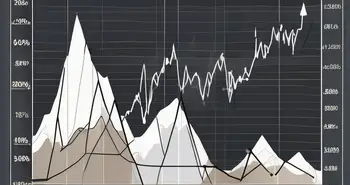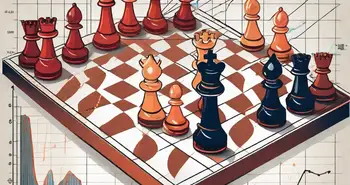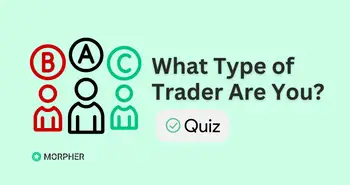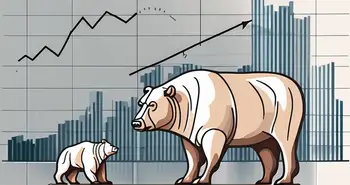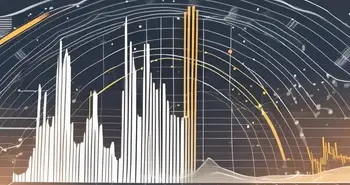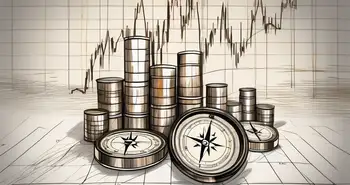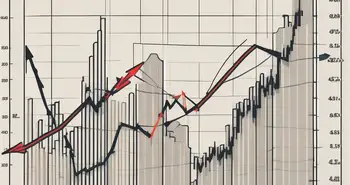How Does Grid Trading Work?
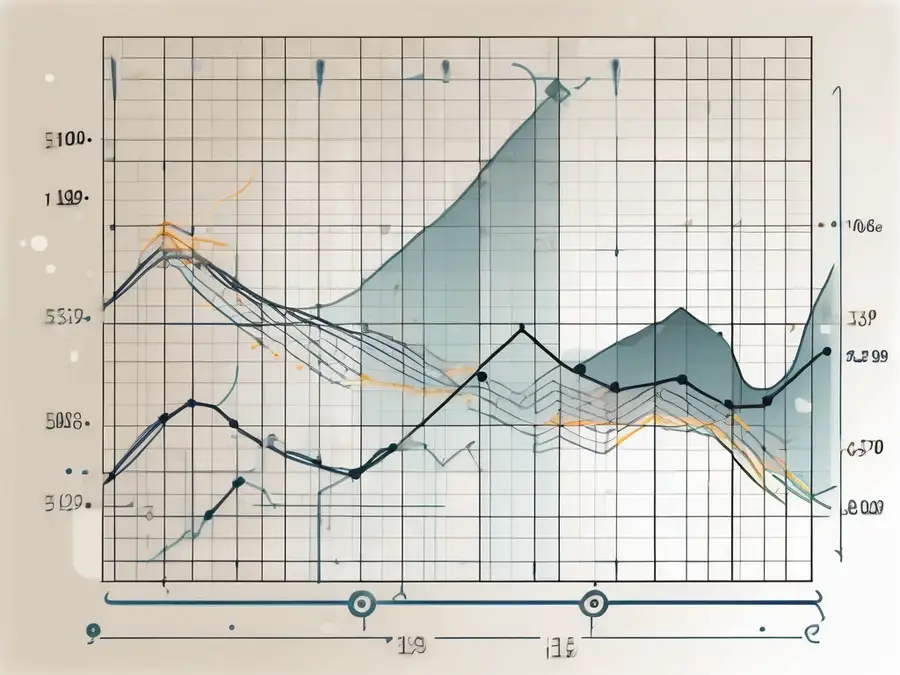
I'm excited to share with you the ultimate guide to grid trading. As an expert in this field, I've seen how grid trading can be a powerful strategy for navigating the volatile world of financial markets. Whether you're an experienced trader looking to diversify your portfolio or a beginner curious about grid trading, this guide will provide you with all the information you need to get started and succeed.
Understanding Grid Trading
Let's delve deeper into the fascinating world of grid trading. At its core, grid trading is a sophisticated strategy that capitalizes on the dynamic nature of financial markets. By strategically placing buy and sell orders at predetermined price levels, traders aim to navigate the complexities of market fluctuations and generate profits in a systematic manner.
One key aspect of grid trading is its adaptability to various market conditions. Traders can adjust the parameters of their grid structure based on factors such as volatility, trend direction, and risk tolerance. This flexibility allows for the optimization of trading strategies to suit different scenarios, enhancing the overall effectiveness of grid trading.
Definition and Basics of Grid Trading
Grid trading is a meticulously planned trading approach that involves the placement of multiple buy and sell orders at regular price intervals. These orders collectively form a grid-like structure, providing traders with a comprehensive framework for executing trades. The fundamental goal of grid trading is to capitalize on the price fluctuations of a specific asset, leveraging the repetitive nature of market movements to generate profits.
As traders implement grid trading in practice, they meticulously analyze market conditions and price trends to strategically place their buy and sell orders within the predefined grid. This strategic positioning enables traders to capitalize on both upward and downward price movements, maximizing profit potential while effectively managing risk.
The Importance of Grid Trading in Forex
Grid trading holds significant relevance in the forex market, a global marketplace known for its high liquidity and volatility. The dynamic nature of forex pairs presents a fertile ground for grid traders to thrive, as price fluctuations offer abundant opportunities for profit generation. Moreover, the 24-hour trading environment of the forex market empowers traders to implement grid strategies at any time, ensuring flexibility and accessibility in executing trading decisions.
Furthermore, grid trading in forex enables traders to diversify their portfolios and mitigate risk by spreading their trades across multiple currency pairs. This diversification strategy helps traders navigate market uncertainties and optimize their trading performance by capitalizing on a broader range of opportunities within the forex market.
The Mechanics of Grid Trading
Now that we have a solid understanding of the basic concept of grid trading, let's dive into the mechanics of how it works.
How Grid Trading Works
In grid trading, you create a grid of buy and sell orders at predetermined price levels. Let's say you're trading a stock that's currently priced at $100. You might set your grid with buy orders at $95, $90, and $85, and sell orders at $105, $110, and $115.
As the price moves, your pending orders will be executed. If the price drops to $95, your buy order will be triggered, allowing you to profit from the subsequent upward movement. Similarly, if the price rises to $105, your sell order will be executed, enabling you to profit from the downward movement that follows.
Key Components of a Grid Trading System
Building a successful grid trading system requires careful consideration of several key components:
- Grid Size: The interval between each buy and sell level in your grid. It determines the potential profit and loss of each executed trade.
- Entry and Exit Rules: Clearly defined rules for entering and exiting trades within the grid.
- Risk Management: Implementing effective risk management measures to protect your capital and minimize losses.
- Market Selection: Choosing the right market that exhibits the necessary volatility and liquidity for grid trading.
By carefully designing and implementing these components, you can create a robust and profitable grid trading system.
Advantages and Disadvantages of Grid Trading
Like any trading strategy, grid trading comes with its own set of advantages and disadvantages. Let's explore them in detail.
Pros of Using a Grid Trading Strategy
Grid trading offers several advantages:
- Profit Potential: Grid trading allows you to profit from both upward and downward price movements, increasing your profit potential.
- Reduced Emotional Decision-Making: With a systematic approach, grid trading eliminates emotional decision-making, ensuring discipline and consistency.
- Diversification: By spreading your trades across multiple price levels, grid trading provides diversification, reducing the impact of individual trades.
Cons and Risks Involved in Grid Trading
While grid trading has its advantages, it's essential to consider the potential risks:
- Unlimited Losses: If the market keeps moving against your position, grid trading can result in accumulating losses.
- Market Range Limitations: Grid trading performs best in markets with significant price volatility. In range-bound markets, it may not yield desired results.
- Requires Monitoring: Constant monitoring of the market is essential to adapt grid levels to changing market conditions.
Understanding the advantages and risks associated with grid trading will help you make informed decisions when developing your trading strategy.
Setting Up Your Grid Trading Strategy
Now that you have a solid understanding of grid trading, let's discuss how you can set up your own strategy.
Choosing the Right Market for Grid Trading
When selecting a market for grid trading, consider its volatility and liquidity. Forex, cryptocurrencies, and certain stocks are often suitable for grid trading due to their high liquidity and frequent price movements.
Determining Your Grid Size
The grid size plays a crucial role in your trading strategy. A larger grid size means wider price intervals, potentially resulting in higher profits. However, it also increases the risk associated with each trade. Assess your risk tolerance and trading goals to determine the optimal grid size for your strategy.
Setting Your Buy and Sell Orders
Based on your analysis and market conditions, you can set your buy and sell orders within the grid. Remember to consider support and resistance levels, trend lines, and other technical indicators to increase the probability of successful trades.
Grid Trading and Market Volatility
How Grid Trading Responds to Market Fluctuations
Grid trading is designed to take advantage of market volatility. As price fluctuations occur, grid traders are positioned to profit regardless of the market's direction. In volatile markets, where prices move significantly, grid trading can generate substantial profits.
Grid Trading in Bullish and Bearish Markets
Grid trading can be applied in both bullish and bearish markets. In a bullish market, grid traders can profit from upward price movements, while in a bearish market, they can take advantage of downward price movements. This flexibility makes grid trading a valuable tool for traders in various market conditions.
As an expert in grid trading, I've personally found this strategy to be a fantastic addition to my trading arsenal. It offers a unique way of profiting from market volatility, and by carefully managing risk and adapting to changing market conditions, it can be highly rewarding.
FAQ
Q: What is grid trading?
A: Grid trading is a strategy that involves placing multiple buy and sell orders at regular price intervals to profit from market fluctuations.
Q: Is grid trading profitable?
A: Grid trading can be profitable if implemented correctly. It's essential to carefully design and manage your grid trading system to minimize risks and maximize profits.
Q: What markets are suitable for grid trading?
A: Forex, cryptocurrencies, and certain stocks are popular choices for grid trading due to their high liquidity and price volatility.
Q: How do I determine the optimal grid size?
A: Assess your risk tolerance and trading goals to determine the optimal grid size. Consider the potential profits and risks associated with wider or narrower price intervals.
Q: Can I use grid trading in range-bound markets?
A: Grid trading performs best in volatile markets. In range-bound markets with limited price movements, grid trading may not yield desired results.
By following the principles and strategies outlined in this ultimate guide to grid trading, you'll be well-equipped to enter the exciting world of grid trading. Remember, as with any trading strategy, practice and continuous learning are key to mastering grid trading. Good luck and happy trading!
Ready to put your grid trading knowledge into action? Look no further than Morpher, the revolutionary trading platform that's perfect for your grid trading strategy. With zero fees, infinite liquidity, and the ability to trade a vast array of assets, Morpher is the ideal choice for both beginners and seasoned traders. Embrace the power of blockchain technology and take advantage of fractional investing, short selling, and up to 10x leverage to amplify your trades. Experience a unique trading environment with Morpher's Virtual Futures and ensure your safety with the non-custodial Morpher Wallet. Sign Up and Get Your Free Sign Up Bonus today to start trading on a platform that's as innovative as your trading strategy!

Disclaimer: All investments involve risk, and the past performance of a security, industry, sector, market, financial product, trading strategy, or individual’s trading does not guarantee future results or returns. Investors are fully responsible for any investment decisions they make. Such decisions should be based solely on an evaluation of their financial circumstances, investment objectives, risk tolerance, and liquidity needs. This post does not constitute investment advice.

Painless trading for everyone
Hundreds of markets all in one place - Apple, Bitcoin, Gold, Watches, NFTs, Sneakers and so much more.

Painless trading for everyone
Hundreds of markets all in one place - Apple, Bitcoin, Gold, Watches, NFTs, Sneakers and so much more.

